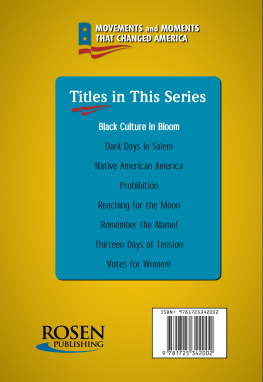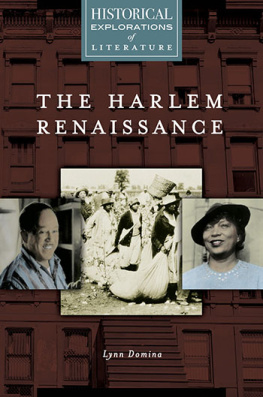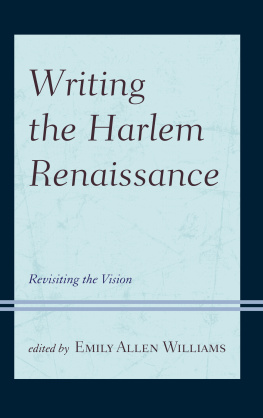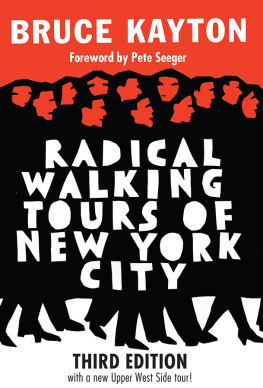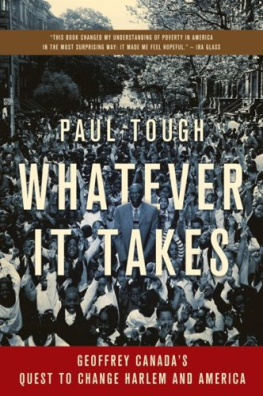Walking Harlem
Walking Harlem
The Ultimate Guide to the Cultural Capital of Black America
Karen F. Taborn

RUTGERS UNIVERSITY PRESS
New Brunswick, Camden, and Newark, New Jersey, and London
Library of Congress Cataloging-in-Publication Data
Names: Taborn, Karen Faye, author.
Title: Walking Harlem : the ultimate guide to the cultural capital of Black America / Karen Faye Taborn.
Description: New Brunswick, New Jersey : Rutgers University Press, 2018. | Includes bibliographical references and index.
Identifiers: LCCN 2017033817| ISBN 9780813594576 (pbk. : alk. paper) | ISBN 9780813594606 (Web PDF) | ISBN 9780813594583 (epub) | ISBN 9780813594590 (mobi)
Subjects: LCSH: Harlem (New York, N.Y.)Tours. | New York (N.Y.)Tours.
Classification: LCC F128.68.H3 T33 2017 | DDC 917.47/104dc23
LC record available at https://lccn.loc.gov/2017033817
A British Cataloging-in-Publication record for this book is available from the British Library.
Copyright 2018 by Karen F. Taborn
All rights reserved
No part of this book may be reproduced or utilized in any form or by any means, electronic or mechanical, or by any information storage and retrieval system, without written permission from the publisher. Please contact Rutgers University Press, 106 Somerset Street, New Brunswick, NJ 08901. The only exception to this prohibition is fair use as defined by U.S. copyright law.
The paper used in this publication meets the requirements of the American National Standard for Information SciencesPermanence of Paper for Printed Library Materials, ANSI Z39.481992.
www.rutgersuniversitypress.org
Manufactured in the United States of America
To my parents,
Albert and Jeannette (Tyler) Taborn,
who taught me to appreciate
my culture and history
Contents
Walking Harlem traces the musical, literary, visual arts, dance, and socio-political developments in Harlem from around 1919 to the present with a focus on the 1920s1930s Harlem Renaissance. The book draws from numerous sources including historical and out-of-print texts, newspapers, record liner notes, and film to focus on the cultural, arts, and political developments of African Americans in Harlem, and it links this information to five self-guided walking tours. The authors background as an ethnomusicologist is evident in a focus on music venues that have often been overlooked in previous researches.
Tours are based on proximity of sites to one another along each tour route; however, key themes may be identified in each tour. covers the neighborhood of Sugar Hills apartment buildings and nightclubs and preHarlem Renaissance sites (Morris-Jumel Mansion and Jumel Terrace). The tour ends at the Malcolm X and Dr. Betty Shabazz Memorial and Educational Center (the former Audubon Ballroom) in Washington Heights. The estimated times per tour are included at the beginning of each tour, and recommended restaurants and eateries are included in each tour for walkers to stop and take a break along the tour routes if desired.
This tour guidebook and its accompanying maps provide a concise history with background on the most significant developments of the Harlem Renaissance era and beyond with the places and people associated with them. Those who are interested in reading a more in-depth background on social developments or important Harlem personalities can refer to of the book, enabling you to greater familiarize yourself with the social-political-cultural history of Harlem.
In addition to reading and following the tours in this book, I encourage you to expand on your knowledge and appreciation of Harlems vast and rich culture on your own by revisiting sites that remain in operation today and those that have sprung up since the Renaissance era but reflect back on Harlems rich past as well as celebrate its present and future.


Harlem is roughly located north of 110th Street (Central Park North), south and west of the Harlem River, and east of the Hudson River. Subsections of Harlem include Spanish Harlem, to the east of Fifth Avenue, spiraling outward from 116th Street, and West Harlem, including Hamilton Heights and Sugar Hill.
Walking Harlem
During the late 1800s, real estate brokers had geared Harlem property to be set aside as an upper-class white residential area. Wall Street stockbrokers and other whites who could afford it were to be lured uptown to reside with the whites who lived there at the time. Harlem was mostly made up of European immigrants. The southeast corner of Harlem was Italian, the central-south section was largely Russian Jew, and the Germans and Irish were in the center and the north. There were also sections made up of second- and third-generation American whites. A relatively small group of Blacks also resided in Harlem at the time, living in scattered pockets.
The majority of Blacks were living in a crowded ghetto on the west side of Manhattan in the Columbus Circle area known as San Juan Hill. Some were able to find apartments in the west twenties and thirties.themselves with an excessive amount of real estate on their hands. Brokers began to panic.
In 1901, in desperation to earn back money invested in the would-be boom, Philip Payton, an enterprising Black real estate broker, proposed acting as a liaison to Black families who were willing to pay even higher rents than the prospective white tenants. Harlem property interests soon attracted the crme de la crme of New Yorks Black business leaders. They organized themselves into the Afro-American Realty Company that Payton founded in 1904. National support for the company came from Black business leaders such as Booker T. Washington, who was on close personal and business terms with all the companys board member.
The first bold Blacks to move into exclusively white areas in Harlem were not welcome. There were a number of organized efforts to block their inflow, including the Hudson Realty Company, the West Side Improvement Corporation, the West Harlem Property Owners Association, the Save Harlem Committee, the Committee of Thirty, and the Harlem Property Owners Improvement Corporation.
From the outset, two important developments took placeone, the grand scale in which political leadership emerged, and the other, the development of the arts and the emergence of the greatest concentration of Black intellectuals to be realized in the United States before the 1920s and 1930s Harlem Renaissance. Through the years, there has been constant interaction between the political and artistic movements in Harlem, with both movements being driven, to a great extent, by the omnipresent theme of overcoming racism.
By 1920, Harlem had a substantial Black presence, and the way had been paved for a Harlem Renaissancea home for writers, political and social activists, musicians, and visual artists who befriended one another, lived, worked, played, competed with one another, and in some cases, fought against one another. During the height of Jim Crowism and racial segregation in the United States and in the midst of the sexual expressiveness of the Roaring Twenties, the Harlem community often demonstrated a liberalism beyond American social norms like no other locale. Above all, the Harlem Renaissance was a special place and time when Black Americans challenged themselves to find a voice of their own. In so doing, Harlemites created one of the most vibrant and exhilarating cultures known anywhere before or since its time.
Next page


